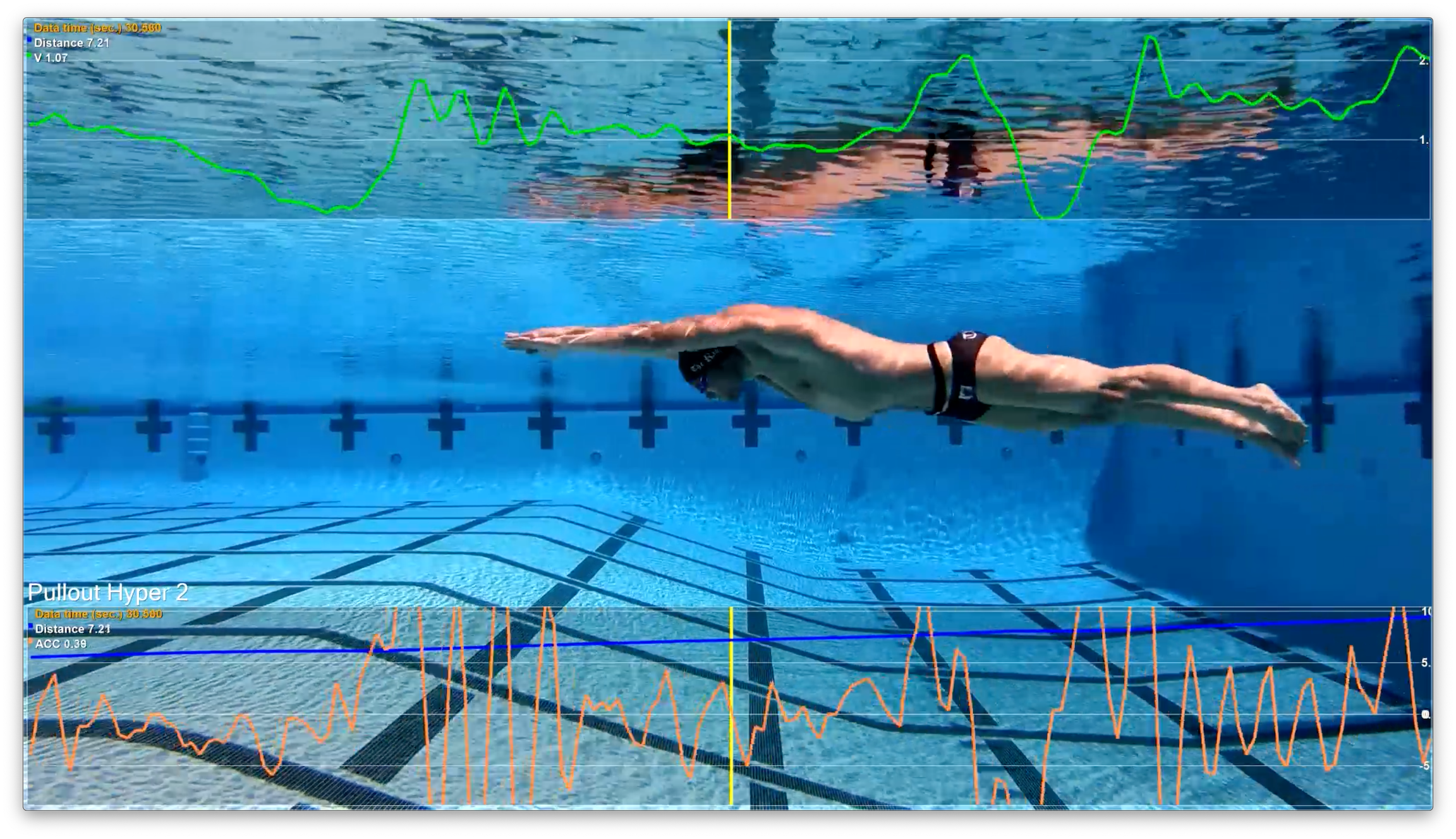How to Finish your Breaststroke Pullout
Whether you are an IMer or a breaststroker, you will need to develop a strong breaststroke pullout to win races. As we so often teach at The Race Club, to do that means the swimmer needs to maximize propulsion and minimize frontal drag. In this aqua note we will discuss how to finish your breaststroke pullout.
We will address increasing propulsion for the pullout in a future article, but now let’s focus on how to reduce drag. To achieve that, the swimmer needs to remain under water and complete the kickout very near the surface. After the push off the wall or the starting block, there are three more propulsive events that should happen before the breakout – a strong dolphin kick, a strong pulldown and a strong breaststroke kick.
In order to remain underwater for all of those propulsive events, the trajectory of the swimmer must begin in the downward direction, not straight off the wall. Once the dolphin kick is completed, the trajectory is then altered in an upward direction so the swimmer can complete the breakout near the surface. Some coaches describe this trajectory as like a checkmark.
The swimmer should start the breaststroke pullout with the lowest frontal drag coefficient possible, which is the hyperstreamline position. That occurs with the chin on or near the chest, the arms placed behind the head, the shoulders hyperextended forward, the elbows as close together as possible, the hands wrapped together, wrist-over-wrist, and with the fingers and thumb squeezed tight and pointed forward. As far as frontal drag is concerned, add pointed toes to this position and that is as good as it gets for the human body.
While the arms, legs, and body will go through various motions during the pullout to gain propulsion, it is vital that the chin remain on or near the chest during the entire pullout. Not until the final out sweeping (lift phase) of the breakout pull, when the hands are outside the shoulders, should the chin ever leave the chest.
Another technique to reduce drag during the pullout occurs during the pulldown. Rather than pulling the hands down to the swimmers’ sides, adjacent to the thighs, the swimmer should end the pulldown with the hands directly beneath the thighs. In so doing, it will cause the swimmers’ shoulders to hunch, reducing frontal drag by 4% compared to a flat or straight shoulder (according to our drag studies).
In drawing the hands and arms forward for the kickout, the swimmer should maintain the hands adjacent to the body all the way back out to the front. Allowing the hands and arms to separate or drift away from the body will add a tremendous amount of drag in this motion.
Finally, and one of the most important techniques for reducing drag during the entire pullout, is for the swimmers to end the kickout in hyperstreamline, not in racing streamline, or worse, superman pose. From hyperstreamline on the kickout, swimmers can easily get into the lift phase of that first breakout pull.
We have been teaching this technique of finishing the pullout in hyperstreamline for years, but recently we gathered the data from our technology to support teaching it.
Using our Propulsion/Drag Meter (PDM) and being towed across a 50-meter pool at 2.29 meters per second, we found that the racing streamline position added 11.6% more drag than the hyperstreamline position. The superman position with elbows bent slightly added 14.3% more drag than hyperstreamline. All measurements of drag were adjusted for the same exact speed.
Using our Velocity Meter Technology (VM), we also measured and compared the following metrics during the kickout of elite swimmer, Aaron Greenberg, using hyperstreamline and racing streamline positions. Kickout duration is defined as the time from the trough velocity prior to the final breaststroke kick to .5 seconds after the peak velocity derived from the breaststroke kick. Here is what we found.
| Metrics | Hyperstreamline | Racing Streamline |
Average Velocity |
1.23 m/sec | 1.01 m/sec |
| Peak Acceleration from kick | 20 m/sec2 | 20 m/sec2 |
| Peak Velocity after kick | 1.75 m/sec | 1.66 m/sec |
| ∆PT | .67 m/sec | .61 m/sec |
| Loss of Velocity after the kick | 34% | 40% |
Completing the pullout in Racing Streamline (left) and Hyperstreamline (right)
For a faster breaststroke pullout, keep your drag low and finish your kickout in the same body position that you started your pullout in – hyperstreamline.
Yours in Swimming,
Gary Sr.

